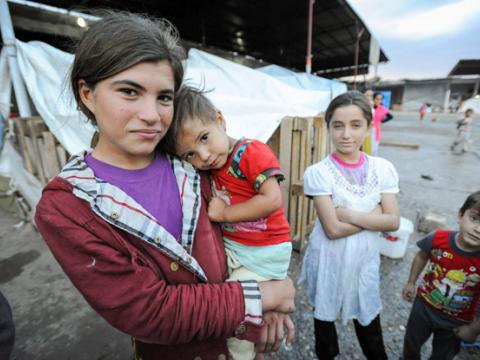Forced displacement policy position
Download
World Vision's policy statement on addressing the known causes of forced displacement
The ongoing plight of forcibly displaced children is a global crisis and represents a collective failure of the international community to prevent and adequately respond to known causes of displacement. Around the world today, 65 million forcibly displaced persons, half of whom are children, are trying to survive in increasingly resource scarce and hostile environments. This figure is the highest recorded since World War II.
Displaced children and their families are overwhelmingly relying on support from host communities and countries. As a result of their generosity, these countries themselves are vulnerable to losing hard-fought development gains.
Practical solutions and concrete commitments to protect children on the move and share responsibility for their care and fulfilment of their rights are desperately needed. These solutions must:
• Put children at the centre;
• Recognise that the primary barrier to the development of durable solutions is a political one;
• Actively counter the narrative which depicts displaced populations as “burdens”;
• Involve everyone in finding solutions.
In addressing movements of forcibly displaced children and their families, World Vision calls on all parties to uphold the rights of the displaced and the communities who welcome them by:
• Investing in resilience and sustainable development outcomes to address the structural causes of forced displacement, including timely and effective political solutions to prevent and resolve conflict;
• Prioritising and strengthening protection measures for children on the move;
• Developing and expanding policies to support self-reliance and mutual benefit between the forcibly displaced and host communities, and providing the necessary funding for implementation;
• Partnering with multi-stakeholder groups, including those within displaced populations and hosting communities, to develop context-appropriate durable solutions to protracted displacement.
Read More
Learn more about the affects of conflict on children in our Cost of Conflict for Children Report: Five years of the Syrian Crisis
Read a case study on our work in Education and Child Protection in Emergencies with internally displaced children in the Kurdistan Region of Iraq
Read a case study on how Cash-Based Programming helps internally displaced families in conflict affected South Sudan



